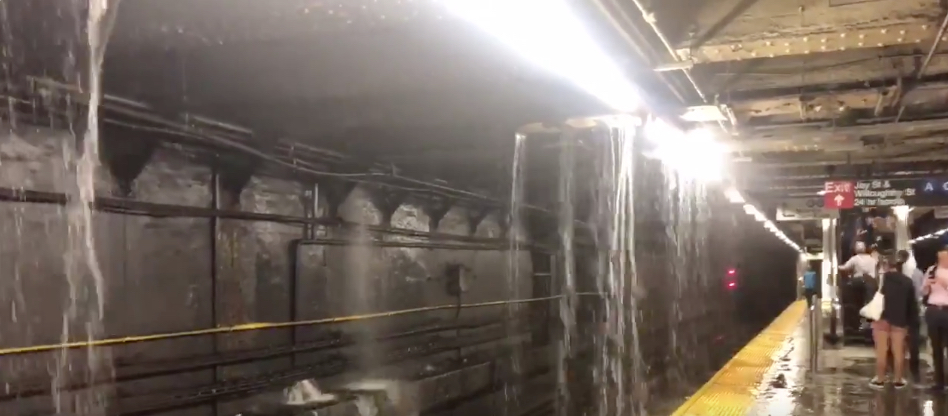I’ve been asking this question for some time, at what point are drowning in our own stuff? Burdened by what we create? Or by the consequences of what we’ve made?
These questions could be asked in relation to many things, but I’m interested in water, specifically sea level rise and flooding due to changing weather patterns (caused by human induced climate change), and waste, specifically plastic trash and pollution.
Take this image from a 1955 Time Magazine glorifying the age of throwaway living. Today I interpret this image as being flooded with our own trash. Did it really make things better?
I live in a brownstone neighborhood in Brooklyn, albeit not in a brownstone myself but rather in a converted parking garage. At the time the neighborhood was built, mid-19th Century, wealth and status were determined by how many steps there were up to your living quarters. At that time, there was no trash removal, animals roamed the streets and the city sewer system was just beginning to be built. The streets were strewn with garbage, food scraps, chamber pot waste (pee and poo) and animal excrement. So the more elevated you were from that environment, the better off you were in terms of smell and the farther you were removed from the waste and potential of disease that came with the waste.
Brownstones elevated living conditions above street detritus when built in the mid-19th Century.
I’ve been noticing over the last few years overflowing trashcans and an increase in street litter. The convenience of grabbing a coffee in a to go cup perhaps gives you pause when there isn’t space in a trashcan to dispose of it. Most folks precariously pile it on top of what’s already there and probably don’t think about it anymore. If you’ve observed garbage collection in New York City, what falls off or out of the can onto the street before making it to the hopper remains there, at least this is what happens in my neighborhood. (In tourist places like Times Square it’s not so evident because there is crew wheeling around garbage cans constantly picking stuff up.)
Overflowing New York City trashcan
I used to wonder if the sanitation workers even saw this. Were they choosing to leave it there, which seemed irresponsible given that trash collection is their job, or had they become immune? Then I realized I was being judgmental. How could anyone possibly complete a collection route if they stopped to pick up all the miscellaneous trash that escapes the bin or the bag that had been torn open on the sidewalk? (Perhaps this is a problem to be addressed with the Public Artist in Residence program, which pairs artists with a city agency address pressing issues.)
Two weeks ago, during heavy rains, the basement of my building, along with many others in the area, flooded. There was just too much water, it couldn’t get out fast enough, and the pipes backed up. Like most cities on the east coast, New York has a combined sewer system, meaning that the water from buildings and from the street all go into the same pipes. So what was backing up was a combination of all of this. Yucky. And smelly.
Water streaming into the Jay Street Metrotech Subway station in Brooklyn during recent heavy rains.
All this has led me to wonder about the potential of the brownstones in my neighborhood returning to their original function. And what about the people who now occupy in the cellar level? And will the culprit be trash or this time might it be water…





